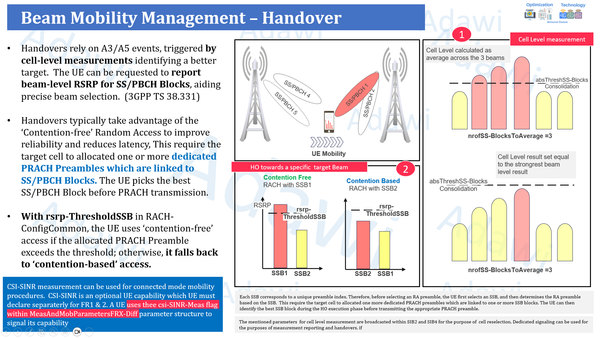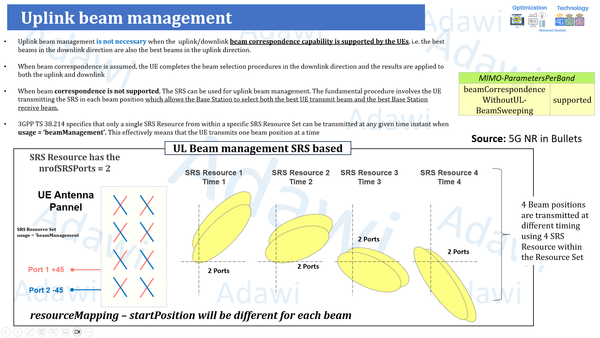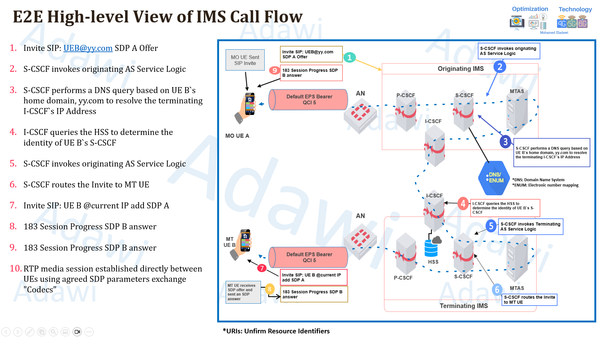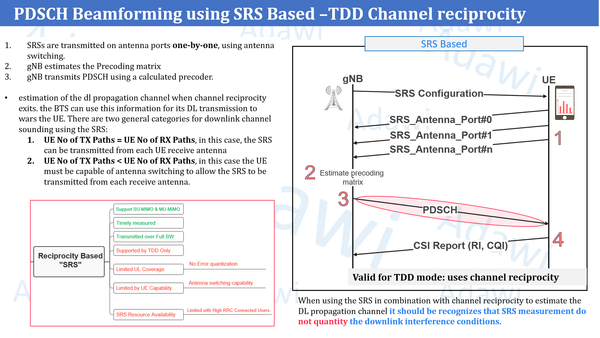4G&5G: UE Radio Link Failure Detection methods & Supervision Timers(Article + Video)

Introduction:
- Firstly, it's important to understand that the BTS and UE independently supervise radio procedures and events to detect RLF. Based on UE or BTS-related timer configurations, the UE or BTS can declare a Radio Link Failure (RLF) based on the network settings. This means that UE and BTS detection of out-of-sync can be asynchronous and independent events.
- What happens after the RLF Declaration? The UE's declaration of RLF results in the initiation of the RRC re-establishment procedure. Meanwhile, the BTS's detection of Out of Sync results in a forced PDCCH procedure targeting UE to perform RRC re-establishment, and the BTS must wait for a configurable timer for the UE to execute RRC re-establishment.
Content:
In this article, we will focus on the UE part. The following topics will be covered in sequence:
- How does the UE detect and declare a Radio Link failure
- UE RLF Declaration and Timers Explanation
- UE RLF: Out of Synchronization
- UE RLF: Handover Failure
- UE RLF: Max No of UL RLC Retransmission reached
- How to check related UE related timers’ configuration from layer 3 messages
- Impact on Radio KPIs, Example what kind of pros/cons expected from timers tuning/extension.
Points 2, 3, and 4 will be covered separately in this article, with each section dedicated to a specific RLF detection method.

(1) How does the UE detect a Radio Link Failure?
- Understanding this part is key, especially when troubleshooting or improving 4G & 5G retainability. It helps you know how the UE spots a radio link failure, which is vital for pinpointing issues. Plus, it gives you confidence when adjusting UE-related timers for better performance.
- Out of Sync: UE Initiate Out-Of-Sync indications when the radio link quality belonging to all the monitored Reference Signals is worse than Qout.
- T304: Handover Failure will be declared when the maximum waiting time for Successful HO expire.
- MAX UL RLC Retransmission: UE will declare RLF when the maximum RLC Retransmission is reached.
- Random Access Procedure: Random Access Procedure fails due to reaching the maximum no of preamble transmission.

Now, let's take a closer look at the ways the UE detects RLF and the specific timers and settings involved.
(2) UE RLF Declaration and Timers Explanation
(A) UE RLF: Out of Synchronization
The UE's physical layer sends an 'Out-Of-Sync' signal to the RRC Layer when the quality of all monitored reference signals drops below a certain level (Qout). Here's a simple breakdown: the BTS and UE have specific targets, settings, and timers. In a nutshell, the UE gets its targets and settings, starts monitoring and comparing, and only declares RLF when it detects a problem based on the specified timers and thresholds.
- The Base Station configures the UE with a pair of Block Error Rate (BLER) targets: refer to
- BLERout corresponds to a quality level (Qout) at which the radio link is categorized as being unreliable.
- BLERin corresponds to a quality level (Qin) at which the radio link is considered reliable.
- 3GPP TS 38.133 specifies that Qout corresponds to a quality at which the BLER belonging to a hypothetical PDCCH transmission is worse than BLERout, i.e. PDCCH reception is not reliable.

- The UE RRC Layer uses the ‘Out-Of-Sync’ indications in combination with N310, T310 and N311 to detect Radio Link Failure.
- Where the timer T310 started if the RRC Layers receives N310 consecutive Out of Sync indications.
- The Timer t310 is stopped and reset if the RRC Layer subsequently receives N311 consecutive In Sync.
- Radio Link Failure is detected if T310 expires, and the Transmitted of UL Data is turned off after the timer t310 is expired.
- After T310 expiry, The UE will start RLF reestablishment procedure where we have the following two timers comes into the figure:
- t311: Governs the time the UE must reselect and access the BTS after the RLF has occurred. “Initiate RRC Connection Reestablishment Request
- t301: Governs the duration where the UE has to wait for RRC Conn Reestablishment response from the BTS.
Let's make things clearer with examples. In the examples below, we'll assume the following:
Example 1: Radio Link Failure declared:
- Now, let's assume that the current DL BLER is 11% or more for the UE.
- In this scenario, if the Out-Of-Sync indications reach the n310 value, the T310 timer starts, giving the UE a chance to sync back.
- If the UE doesn't hit the BLER-In target within the set thresholds during the T310 timer, the RLF Layer steps in.
- When the T310 Timer runs out without success, the UE declares a radio link failure, leading to the initiation of the RRC Reestablishment Procedure.

- In the picture below, once the UE declares RLF and T310 Timer expires, the T311 timer begins. It waits for the UE to kick off RRC Connection Reestablishment. If the UE doesn't get a response from the BTS, a drop occurs.
- T311 governs the time the UE must reselect and access the BTS after the RLF has occurred. “Initiate RRC Connection Reestablishment Request”
Note: A longer timer may lead to more voice gaps for VONR & VoLTE Users.

Example 2: Connection restored by the UE without declaring an RLF
- If the UE successfully meets the BLER-In target within the configured BLER-In thresholds, the RLF Layer will generate In Sync indications.
- If the reported In Sync indications match the n311 parameter, the UE can recover the connection without declaring RLF.
- It won't need to initiate the RRC Reestablishment Procedure, and the T310 will stop.

Key Points & Important Notes:
- A UE facing Radio Link Failure quickly turns off its transmit power to avoid causing uplink interference after losing connection.
- 3GPP TS 38.133 states that a UE should power down within 30ms of detecting Radio Link Failure. The BTS must also detect this failure to prevent resource allocation towards an unreachable UE.
- These measures are designed to secure network capacity during RLF incidents.
- They also explain when UE/Network may have intermittent or complete silent interruptions. For instance, during the RLF procedure "Out of Sync Reporting," the UE experiences voice interruptions until connection recovery.
- This clarifies why different timers are set for Voice and Data, as Voice Services are more sensitive. Setting RLF Timers (e.g., T310) to high values can result in longer silent interruptions.
- It's crucial to note that physical layer problems can vary among implementations. Monitoring RSRP Levels and theoretical BLER targets (>10%) helps evaluate different devices' triggering conditions. While devices follow the same concept, some may trigger re-establishment earlier than others.
(B) UE RLF: Handover Failure(T304 Timer)
T304 Governs RRC Reconfiguration Procedure for the HO, Simply means that If the UE does not complete the handover before this timer expires, the UE reverts back to the associated configuration and initiates an RRC connection reestablishment procedure.
- The T304 Timer is specified using a value of 50. 100, 150. 200, 500. 1000 or 2000 ms.
- The UE starts this Timer upon receiving the RRC Reconfiguration message for the mobility control information. “MobilityControlinfo”
- If T304 expires before the UE MAC successfully completes the random-access procedure on the target cell.
- The UE initiates the RRC Connection Reestablishment if the timer expired before the UE completed the HO.

Normal HO Procedure Vs. Abnormal HO Procedure:


(C) UE RLF: Max No of UL RLC Retransmission reached
- To accommodate the minimum round-trip time of sending additional HARQ retransmission and receiving its ACK/NACK, the UE tPoll Retransmit Time should be tuned to allow the UE RLC to wait for the additional X HARQ retransmission ACK/NACK before polling UE RLC. (UE Poll Retransmit Timer should be tuned to cover ULMAXHARQ * HARQ Intervals)
- For Example, if HARQ round-trip time is 8 msec and MAXULHARQ is set to 6, set the T Poll Retransmit timer to be equal or greater than 6 * 8ms = 48ms. If Tpoll timer doesn't cover the HARQ Process duration, RLC Retx may interrupt the ongoing HARQ Process.
- RLC entity is configured (both at UE & eNB) to perform data transfer in one of the three modes: transparent, unacknowledged, and acknowledged.
- One of the functions of the RLC (Radio Link Control) protocol is error detection & recovery.
- RLC layer retransmissions are available only in RLC acknowledged mode.
- Radio Resource Control (RRC) protocol layer is generally in control of the RLC configuration.
- The RLC AM receiver responds to polling request by transmitting a STATUS PDU which acknowledges successfully received PDUs and also selectively NACKs unsuccessfully received PDUs.

In Summary: Once the MaxRetxThreshold is reached, the UE declare a Radik Link Failure.

(3) How to check related UE related timers’ configuration from layer 3 messages?
(A) UE RLF detection: Out of Synchronization
- UE SIB1 in 5G SA and SIB2 in 4G
- RRC Configuration “spCellConfig” in 5G NSA, T300 & T319 are not included in 5G NSA.

(B) T304 related timer configuration from layer 3 messages?
From: RRC Configuration “MobilityControlInfo” in 5G SA & 4G

(C) UE related UL RLC & MAC timers configuration from layer 3 messages?
4G Part: RRC Setup message from e-NB to the UE

5G Part: CellGroupConfigNR after RRC Setup message from g-NB to the UE

(4) Timer extension impact on Radio KPIs
T310 timer extension impact:

RLC related timer extension impact:
- Increasing the timers can enhance RLC, RBLER retransmission, and handover related KPIs.
- However, it may have downsides by potentially increasing interference, latency, and impacting overall system capacity.


The below video for the same:
Study Sources:
- 5G NR in Bullets
- 3GPP TS 38.133
- Practical experience
- https://www.rfwireless-world.com/Terminology/LTE-timers.html
- https://wirelessbrew.com/5g-nr/5g-nr-timers-and-constants/
- https://www.techplayon.com/5g-nr-rrc-timers-counters-and-constants/
- https://moniem-tech.com/questions/is-there-call-re-establishment-in-volte/
- https://techlteworld.com/rlf-radio-link-failure-in-lte/
- https://www.sharetechnote.com/html/RLC_LTE.html




